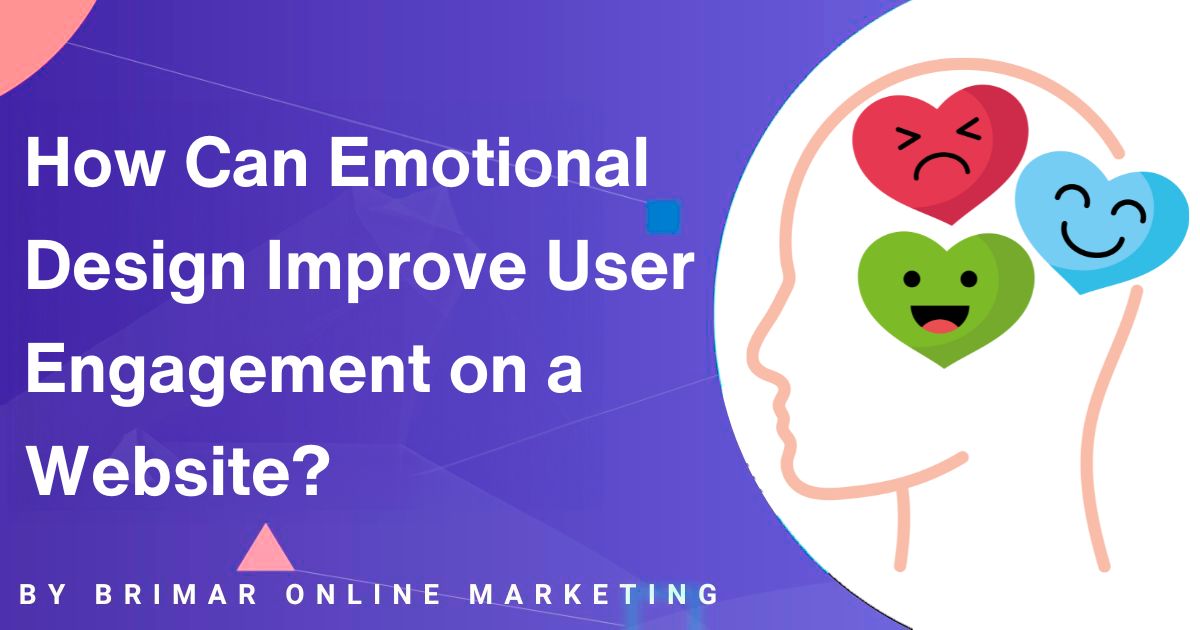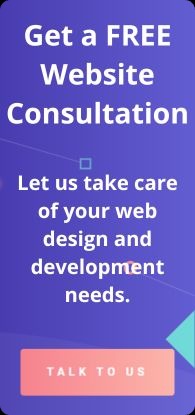
People don’t just visit websites for information.
They want to feel something.
Whether it’s excitement, trust, comfort, or delight, those emotional cues can make or break their experience.
That’s where emotional design steps in.
It’s not just about making things look good; it’s about creating a meaningful experience that resonates on a deeper level.
When visitors feel understood and emotionally supported, they tend to stay longer, explore more, and come back.
Such an emotional connection can spark trust, increase user engagement, and even lead to a higher conversion rate.
Behind every scroll, click, and swipe is a real person.
And when design resonates with their emotions, not just their logic, something powerful happens.
What Is Emotional Design?
Emotional design is a thoughtful approach to creating digital experiences that evoke genuine human emotions.
The concept originated from research in human-computer interaction, where experts observed a pattern: people tend to react emotionally to how something appears, feels, and behaves online.
These reactions are shaped by three layers:
- Visceral level: This is instant. It’s the gut feeling people get when they first see a layout, a color scheme, or the right image. First impressions count.
- Behavioral level: Here’s where ease of use matters. Is the site smooth? Intuitive? Helpful? When things work effortlessly, people feel calm and in control.
- Reflective level: This is deeper. It’s where users start to form a bond. They remember how the website made them feel, valued, respected, and inspired.
When a product or site touches all three levels, the impact isn’t just aesthetic.
It enhances user satisfaction, fosters emotional connections, and promotes repeat visits.
In a crowded market full of options, positive emotions can be the difference between someone clicking away or sticking around.
Good design solves problems.
Emotional design goes further; it speaks directly to the heart.
And that makes all the difference.
Get a FREE Website Consultation
Let us take care of your web design and development needs so you can focus on your business. We can handle new websites, landing pages, website redesign, and even maintenance.
Contact us today to get a free website consultation!
The Psychology Behind Emotional Responses
Emotions shape nearly every online decision we make.
A color, a phrase, a button placement, these things might seem small, but they trigger reactions we’re often not even aware of.
That reaction?
It’s emotional.
When a website sparks a positive emotion, such as curiosity, excitement, or comfort, it creates a moment that sticks.
Users stay longer, click more, and trust more.
But the reverse is just as true.
A frustrating experience or a confusing layout doesn’t just annoy people.
It causes them to leave and not return.
And that one bad moment can shape how they view the brand from then on.
This is the point where emotional intelligence becomes important.
Great UX designers know they’re not just building layouts; they’re creating experiences for people in different emotional states.
Someone visiting a website could be in a hurry, frustrated, hopeful, or skeptical.
Tapping into that emotional reality, without overwhelming it, can make a profound difference.
Empathy is the real secret weapon here.
The more you understand how your audience feels and what they need to feel better, the more likely they are to engage with your content, your product, and your brand.
Emotional Connection as a Powerful Tool
People connect with people.
That’s true even online, where things can feel distant or mechanical.
A website that feels human, with personality, warmth, and care, builds a genuine emotional connection.
It starts with a personal touch.
Imagine landing on a page that seems to “get” you.
It speaks your language, it reflects your values, and it offers solutions tailored to your life.
That’s not luck.
That’s design with intention.
When websites genuinely reflect user preferences, it feels like someone built it just for you.
That connection goes even deeper when storytelling gets involved.
Stories aren’t just entertaining; they help users see themselves in your journey.
They tap into emotions like trust, belonging, and even hope.
That’s the kind of emotional appeal that doesn’t just get attention; it builds loyalty.
People recall their emotional experience on a website.
If that feeling is clarity, relief, or excitement, you’ve already won half the battle.
Key Emotional Design Elements
Colors are more than decoration.
They whisper to our subconscious.
- Blues feel calm and secure.
- Reds grab attention and spark urgency.
- Greens invite balance.
Choosing the right color scheme means deciding how your users feel the moment they land on your site.
But color is just the beginning.
Visual storytelling is where things get personal.
The right image, real, relatable, human, pulls someone in and says, “You belong here.”
That single photo or graphic can carry more emotional weight than paragraphs of copy.
Then there’s the interface.
A clean, intuitive design doesn’t just look good.
It puts people at ease.
It gives them confidence.
If they can find what they need without frustration, that ease of use turns into trust.
And when every interaction flows naturally, users feel like they’re being guided, not pushed.
Good flow and function aren’t bonuses; they’re the bones of positive user experiences.
They keep people engaged.
They create those quiet moments where everything falls into place.
And when users feel that level of care, they’re far more likely to come back, or hit that “Buy” button.
Emotional Design in the Design Process
Designing a website is more than picking the right font or arranging boxes on a screen.
It’s about understanding what your users feel the moment they land on your site.
That’s where emotional thinking comes into play.
When designers begin with empathy and curiosity, wondering what a user might be going through, hoping to find, or needing to feel, they create experiences that feel real and human.
This kind of design thinking isn’t just a trend.
It’s becoming a core part of how smart businesses approach their digital strategy.
UX designers are right at the heart of it.
They’re the ones blending form and function, asking the right questions, and ensuring every click, scroll, and interaction feels smooth and natural.
It’s a delicate balance.
A beautiful interface that confuses users won’t work.
And a perfectly functional site that feels cold or generic won’t inspire trust.
The sweet spot lies in combining both.
Of course, emotions aren’t guesswork.
They can be measured and understood.
That’s where data steps in.
By paying close attention to how users interact with your site (where they click, how long they stay, and what they ignore), you start to see patterns.
These insights help refine the design, adapt it to your users’ emotional states, and keep the experience feeling fresh and personal over time.
From Good Design to Great Experience
There’s a big difference between a website that looks nice and one that makes people feel something.
Good design might check all the boxes, but great design stirs something deeper.
It taps into that visceral level, where users don’t just see a product; they feel connected to it.
Think about it.
Have you ever returned to a website just because it made you feel calm?
Or because it sparked curiosity?
That’s not luck.
That’s emotional design done right.
It triggers reflective emotions, the kind that stick with someone long after they’ve left the page.
These feelings lead to loyalty, advocacy, and a relationship that goes beyond just buying or clicking.
Consistency plays a huge part too.
Whether someone finds you on your homepage or your Instagram feed, the tone, visuals, and message need to feel like they’re coming from the same voice.
That’s how you build trust.
It’s how your brand stays recognizable across platforms and becomes part of someone’s daily scroll, not just a one-time visit.
Notable Examples of Emotional Design
Some brands get it.
They don’t try to wow you with noise or overload you with options.
Instead, they invite you into a space that feels intentional, warm, and tailored.
One great example is Airbnb.
From the moment you land on their site, you’re not just booking a room, you’re picturing a cozy weekend getaway or a spontaneous adventure.
They use soft imagery, friendly language, and clean layouts that guide you, not push you.
It’s designed with feeling.
Another standout is Apple.
Their site is sleek, but never cold.
Every detail, from the spacing to the motion of transitions, feels polished, deliberate, and elegant.
It creates an emotional response rooted in trust, excitement, and desire.
Then there’s Headspace.
A brand that’s built entirely around emotional well-being.
Their use of color, simplicity, and illustration lowers anxiety right away.
It’s not just about functionality; it’s about creating a calm digital environment that people want to return to.
These brands don’t just survive in a crowded market; they thrive.
Why?
Because they understand the emotional journey of their users and design every touchpoint with that in mind.
Ethical Considerations in Emotional Design
Emotions are powerful.
And when design taps into that power, the results can be incredible.
But there’s a line.
A fine one.
There’s a big difference between creating a genuine emotional connection and manipulating someone’s feelings to push them into a choice they didn’t want to make.
Good emotional design builds trust.
It makes people feel seen, valued, and understood.
It doesn’t play tricks or exploit vulnerabilities.
Privacy, autonomy, and mental well-being matter.
If your design nudges people into giving more than they meant to, or makes them feel anxious, rushed, or inadequate, you’re not creating a better experience.
You’re entering a domain that threatens the trust you’re attempting to establish.
Designing with empathy means asking a simple question: how will this make someone feel?
That’s where emotional intelligence comes in.
It helps you see the whole person behind the screen, not just the click, the lead, the conversion.
It’s about respect.
For their time, their attention, their boundaries.
And when you design with that kind of care, people feel it.
They remember it.
The Business Impact of Emotional Design
Let’s talk numbers, because emotional design doesn’t just feel good.
It works.
When people feel a connection to a website or brand, they tend to stay longer.
They explore more.
They trust faster.
That kind of emotional engagement leads to a higher conversion rate, simply put.
But it doesn’t stop at the sale.
Emotional design plays a significant role in building loyalty.
People return to brands that evoke a strong emotional response.
And when they do?
They talk.
They share.
That word-of-mouth, that genuine enthusiasm; it’s marketing gold.
This is where emotional design truly shines.
It’s not only about colors or clever writing.
It’s focused on creating something that people genuinely want to join.
Something they want to tell their friends about.
If you’re building a brand and you’re not thinking about how your design makes people feel, you’re leaving growth on the table.
Emotional design isn’t a nice-to-have.
It’s playing a critical role in how businesses succeed in a world full of noise.
Final Thoughts
The impact of emotional design on user engagement isn’t subtle.
It’s the difference between a visit and a connection.
Between a bounce and a conversion.
Between being remembered and forgotten.
When you create digital experiences that resonate on a deeper level, people notice.
They stick around.
They share.
And they come back.
This isn’t just a tactic.
It’s a design philosophy.
One rooted in care, understanding, and a genuine desire to make things better for the people on the other side of the screen.
So, if you’re building something, anything, start by considering how it makes people feel.
Design for the heart, and the metrics will follow.
We Have Delivered High Quality Websites and Our Customers Are HAPPY!
“Good quality and responsive service. Isaias is a professional person, he is always aware of the needs of his clients. He has always helped me in my projects.”
CEO

